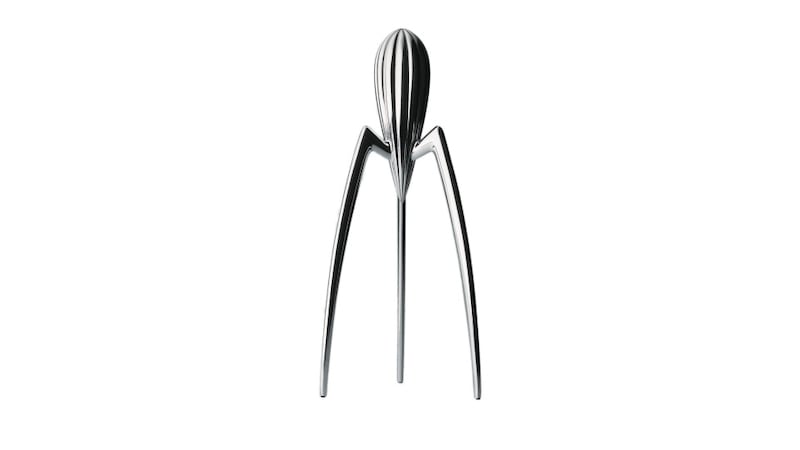I suspect mine cannot be the only house in which there is a slightly dull-looking Philippe Starck citrus squeezer, the Juicy Salif, lurking in the back of the cupboard.
When new and shiny, it is an undeniably beautiful thing – graceful, even – and when it was designed by the visionary Frenchman, who could have thought that a lemon squeezer could become a design classic? Put it on a shelf or worktop and it is instantly eye-catching.
Starck (born in Paris, 1949) created it for Italian design house Alessi.

While having lunch in a pizzeria in Italy, he was eating a bowl of calamari with lemon when the idea came to him; he quickly doodled the lemon squeezer on a napkin and presented it to the company.
The Juicy Salif is based on the shape of a squid with its legs greatly elongated.
The napkin is now archived in Alessi’s own design museum.
The original citrus squeezer is 29cm tall and made from cast aluminium with a mirror polish. As time has gone on, other finishes have been made by Alessi including a limited edition of 299 in bronze.
It works – sort of – though if you exert a bit too much pressure at the wrong angle, the legs can give way and it takes an age for the juice to dribble down into a carefully placed glass below. But in truth that’s not what this is about.
In an interview with Dezeen magazine, Alberto Alessi said that it was one of the most amusing projects he had worked on in his career and that it was "deliberately poking fun at the idea that form should follow function".
How else can you explain the enduring popularity of a citrus squeezer that costs about €60 when you can buy a perfectly serviceable – and more functional one – for about €2?
In this Starck design, the juice is beside the point.








